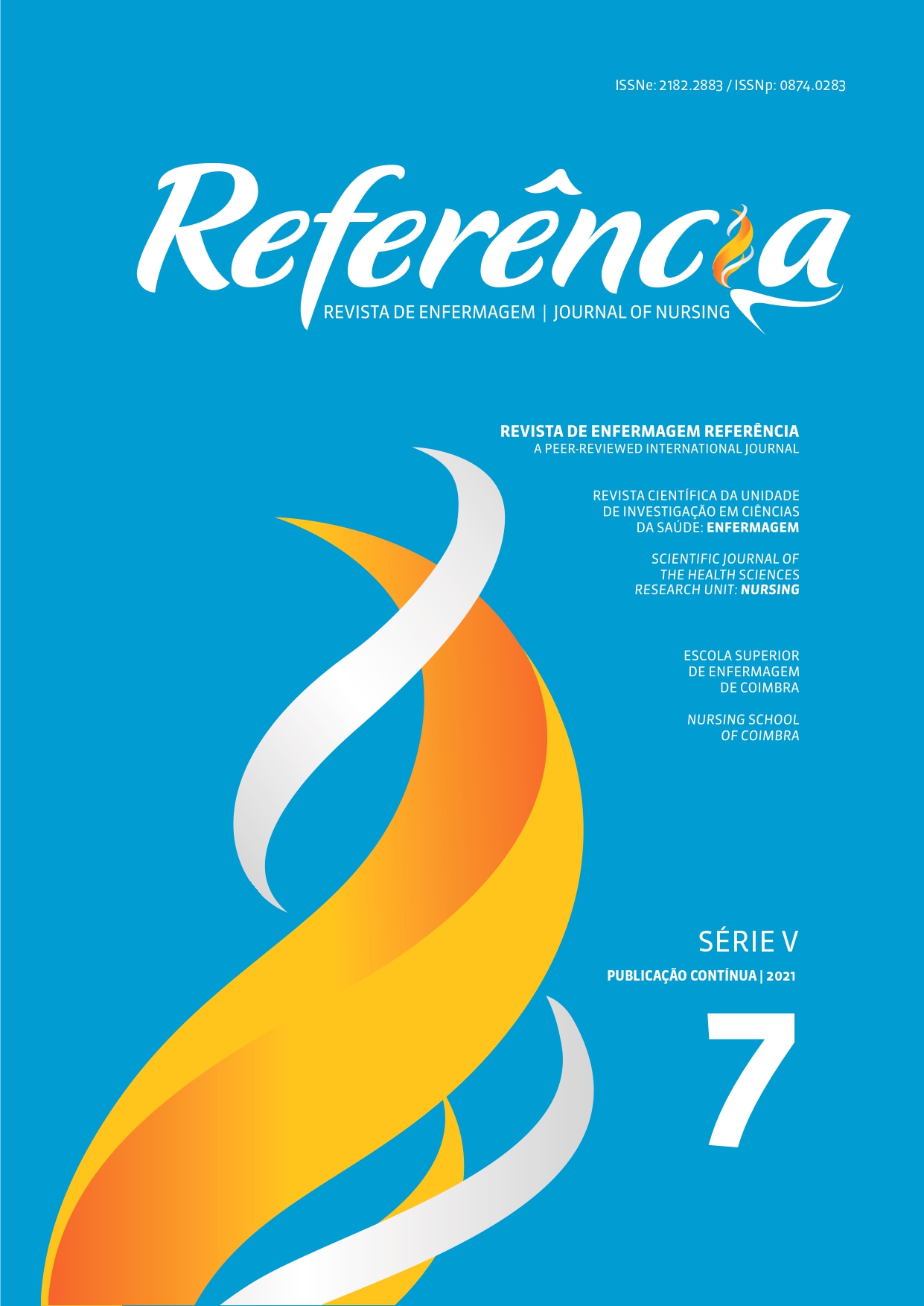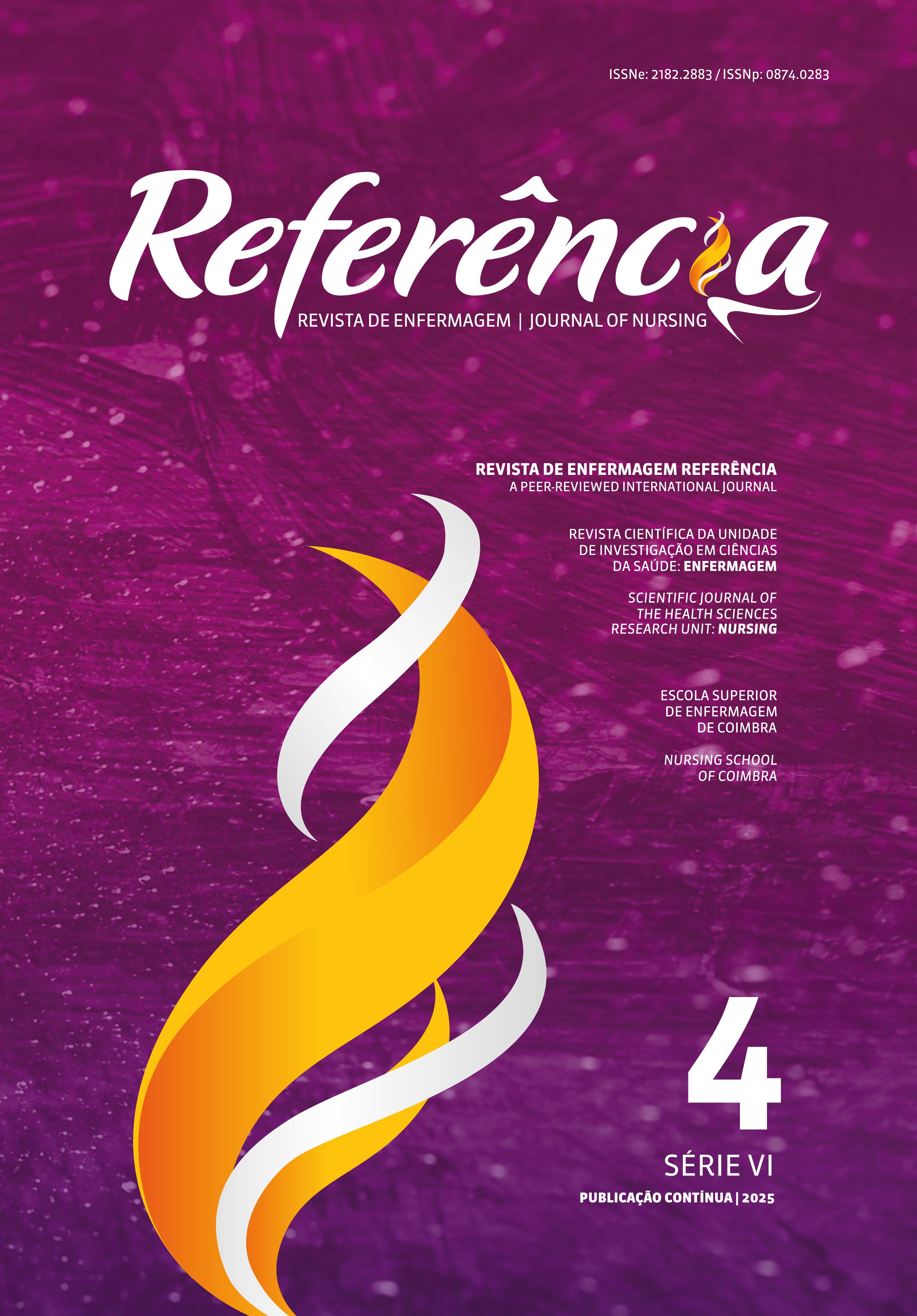Translation, cultural adaptation, and validation of the Venous International Assessment Scale to European Portuguese
DOI:
https://doi.org/10.12707/RV20135Keywords:
catheterization, peripheral, translations, psychometrics, nursesAbstract
Background: A significant number of adult patients experience difficult peripheral intravenous access, leading to multiple puncture attempts and venous network depletion. The Venous International Assessment (VIA) Scale is referenced internationally as a reliable instrument that classifies patients’ peripheral intravenous accesses and determines the risk of related complications.
Objectives: To translate, culturally adapt and validate the VIA Scale to European Portuguese.
Methodology: Study of the translation, cultural adaptation, and evaluation of the psychometric properties of the VIA Scale in a nonprobability sample with 100 patients in need of peripheral intravenous catheterization.
Results: The Portuguese version of the VIA Scale (EARV) revealed moderate inter-rater reliability scores (k = 0.490; p < 0.0005). The criterion and construct validity of the EARV were assessed through predictive, convergent, and correlational analysis, with moderate to large magnitudes, and statistical significance.
Conclusion: The EARV is a reliable and valid instrument that can assist Portuguese health professionals in determining and categorizing difficult peripheral intravenous access. Further studies are recommended to test the transversal applicability of the scale.
Downloads
References
Alexandrou, E., Ray-Barruel, G., Carr, P., Frost, S., Inwood, S., & Higgins, N., Lin, F. F., Alberto, L., Mermel, L., & Rickard, C. M. (2015). International prevalence of the use of peripheral intravenous catheters. Journal of Hospital Medicine, 10(8), 530-533. https://doi.org/10.1002/jhm.238
Beaton, D., Bombardier, C., Guillemin, F., & Ferraz, M. (2000). Guidelines for the process of cross-cultural adaptation of self-report measures. Spine, 25(24), 3186-3191. https://doi:10.1097/00007632-200012150-00014
Boateng, G., Neilands, T., Frongillo, E., Melgar-Quinonez, H., & Young, S. (2018). Best practices for developing and validating scales for health, social, and behavioral research: A primer. Frontiers In Public Health, 11(6), 149. https://doi:10.3389/fpubh.2018.00149
Braga, L. (2017). Práticas de enfermagem e a segurança do doente no processo de punção de vasos e na administração da terapêutica endovenosa [Tese de doutoramento, Universidade de Lisboa]. Repositorio da Universidade de Lisboa. https://repositorio.ul.pt/handle/10451/31677
Carr, P., Higgins, N., Cooke, M., Rippey, J., & Rickard, C. (2017). Tools, clinical prediction rules, and algorithms for the insertion of peripheral intravenous catheters in adult hospitalized patients: A systematic scoping review of literature. Journal of Hospital Medicine, 12(10), 851-858. https://doi:10.12788/jhm.2836
Carr, P., Rippey, J., Cooke, M., Trevenen, M., Higgins, N., Foale, A., & Rickard, C. (2019). Factors associated with peripheral intravenous cannulation first-time insertion success in the emergency department: A multicentre prospective cohort analysis of patient, clinician and product characteristics. BMJ Open, 9(4), e022278. http://dx.doi.org/10.1136/bmjopen-2018-022278
Cohen, J. (1968). Weighted kappa: Nominal scale agreement provision for scaled disagreement or partial credit. Psychological Bulletin, 70(4), 213–220. https://doi.org/10.1037/h0026256
Infusion Nurses Society. (2016). Infusion therapy standards of practice. Journal of Infusion Nursing, 39(sup.1), 1-160. http://source.yiboshi.com/20170417/1492425631944540325.pdf
Landis, J. R., & Koch, G. G. (1977) The measurement of observer agreement for categorical data. Biometrics, 33(1), 159-174. https://doi:10.2307/2529310
Moureau, N. (2019). Vessel health and preservation: The right approach for vascular access. Springer International Publishing.
Oliveira, A., Costa, P., Graveto, J., Costa, F., Osorio, N., Cosme, A., & Parreira, P. (2019). Praticas dos enfermeiros na cateterização intravenosa: Um estudo descritivo. Revista de Enfermagem Referência, 4(21), 111-120. https://doi.org/10.12707/RIV19006
Pagnutti, L., Bin, A., Donato, R., Di Lena, G., Fabbro, C., Fornasiero, L., Gerratana, A., Rigon, L., Gonella, S., & Palese, A. (2016). Difficult intravenous access tool in patients receiving peripheral chemotherapy: A pilot-validation study. European Journal of Oncology Nursing, 20, 58-63. https://doi:10.1016/j.ejon.2015.06.008
Parreira, P., Serambeque, B., Costa, P., Monico, L., Oliveira, V., & Sousa, L., Gama, F., Bernardes, R. A., Adriano, D., Marques, I. A., Braga, L. M., Graveto, J., Osorio, N., & Salgueiro-Oliveira, A. (2019). Impact of an innovative securement dressing and tourniquet in peripheral intravenous catheter-related complications and contamination: An interventional study. International Journal Of Environmental Research And Public Health, 16(18), 3301. https://doi.org/10.3390/ijerph16183301
Rippey, J., Carr, P., Cooke, M., Higgins, N., & Rickard, C. (2016). Predicting and preventing peripheral intravenous cannula insertion failure in the emergency department: Clinician ‘gestalt’ wins again. Emergency Medicine Australasia, 28(6), 658-665. https://doi:10.1111/1742-6723.12695
Rodriguez-Calero, M., Blanco-Mavillard, I., Morales-Asencio, J., Fernandez-Fernandez, I., Castro-Sanchez, E., & de Pedro-Gomez, J. (2020). Defining risk factors associated with difficult peripheral venous Cannulation: A systematic review and metaanalysis. Heart & Lung, 49(3), 273-286. https://doi.org/10.1016/j.hrtlng.2020.01.009
Royal College of Nursing. (2016). Standards for infusion therapy (4th ed.). Royal College of Nursing.
Sabri, A., Szalas, J., Holmes, K., Labib, L., & Mussivand, T. (2013). Failed attempts and improvement strategies in peripheral intravenous catheterization. Bio-Medical Materials and Engineering, 23(1-2), 93-108. https://doi:10.3233/bme-120735
Santos-Costa, P., Sousa, L., Marques, I., Oliveira, A., Parreira, P., Vieira, M., & Graveto, J. (2020). Estudos realizados em Portugal no ambito do cateterismo venoso periferico: Protocolo de scoping review. Revista de Enfermagem Referência, 5(3), 1-6. https://doi:10.12707/rv20004
Santos-Costa, P., Sousa, L., van Loon, F., Salgueiro-Oliveira, A., Parreira, P., Vieira, M., & Graveto, J. (2020). Translation and validation of the modified A-DIVA scale to european portuguese: Difficult intravenous access scale for adult patients. International Journal Of Environmental Research And Public Health, 17(20), 7552. https://doi.org/10.3390/ijerph17207552
Torre-Montero, J., Montealegre-Sanz, M., Faraldo-Cabana, A., Oliva-Pellicer, B., Garcia-Real, I., & Fenwick, M., Caceres, M. E, Rivas-Eguia, B., Vila-Borrajo, C., Valles-Andres, J., Alonso-Gordoa, T., Garcia-Carrion, C., Diaz-Rubio, E., & Beneit-Montesinos, J. V. (2014). Venous international assessment, VIA scale, validated classification procedure for the peripheral venous system. The Journal of Vascular Access, 15(1), 45-50. https://doi.org/10.5301/jva.5000173






